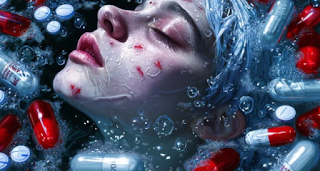We all understand darkness in its physical sense—the absence of light. However, the quote from The Justice League (2017), "True darkness is not defined by the absence of light, but the conviction that it will never return," speaks to a deeper, psychological kind of darkness. It's the feeling of being trapped in despair, where hope seems extinguished, and the chance of things getting better feels nonexistent.
The Duality of Darkness
Darkness isn't inherently harmful. It's a necessary contrast to light, allowing us to appreciate its brilliance even more. Similarly, psychological darkness, a period of struggle or hardship, can catalyze growth. It can force us to confront our vulnerabilities, develop resilience, and emerge stronger.The Crippling Conviction
The actual danger lies not in the darkness but in the conviction that it will never end. This belief breeds hopelessness, where we see no path forward and feel powerless to change our circumstances. It's a self-fulfilling prophecy—without believing in a brighter future, we lack the motivation to take action and break free from the darkness.
The Psychology of Hope
- Goals: We need a clear vision of what we want to achieve.
- Pathways: We need to believe there are ways to reach those goals.
- Agency: We need to feel capable of navigating those pathways.
Breaking Free from the Psychological Darkness
When trapped in a cycle of hopelessness, here's how to reignite the spark of hope:
- Challenge Negative Thinking: Our thoughts influence our emotions. Identify and challenge negative thought patterns that fuel despair.
- Focus on Small Wins: Divide overwhelming goals into smaller, achievable steps. Celebrating these mini-victories reinforces a sense of progress and agency.
- Seek Support: Social connection is vital. Surround yourself with positive, supportive people who believe in you.
- Professional Help: Therapy can equip you with tools to manage negative emotions, develop coping mechanisms, and cultivate a hopeful outlook.
References
- Justice League (Zack Snyder's Justice League): Snyder, Z. (Director). (2021). Zack Snyder's Justice League [Film]. Warner Bros.pen_spark
- MindTools | Home. (n.d.). Www.mindtools.com. https://www.mindtools.com/aov3izj/snyders-hope-theory



















